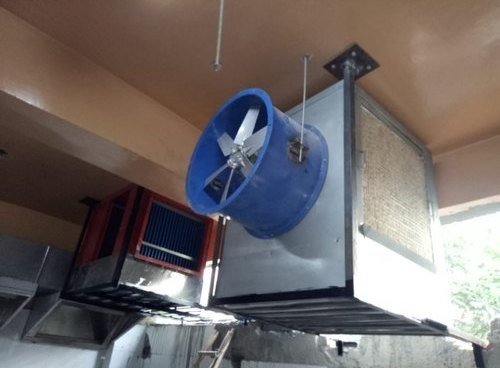An industrial roof extractor, also known as a roof exhaust fan or rooftop ventilator, is a device used to remove hot air, fumes, dust, and other airborne contaminants from industrial buildings, warehouses, factories, and other large facilities. These extractors are typically mounted on the roof of a building to expel stale air and improve indoor air quality. Here are some key aspects of industrial roof extractors:
Design and Size: Industrial roof extractors come in various sizes and configurations to suit different ventilation requirements. They are designed to withstand harsh environmental conditions, such as high temperatures, moisture, and debris, often encountered on rooftops.
Airflow Capacity: Roof extractors are engineered to move large volumes of air efficiently. The airflow capacity of an industrial roof extractor is typically measured in cubic feet per minute (CFM) and is selected based on the size of the facility, the type of contaminants to be removed, and the desired ventilation rate.
Materials and Construction: Industrial roof extractors are constructed from durable materials such as galvanized steel, aluminum, or stainless steel to ensure longevity and resistance to corrosion. The fan blades, motor, and housing are designed to withstand the rigors of continuous operation in industrial settings.
Efficiency and Energy Consumption: Energy efficiency is an important consideration when selecting an industrial roof extractor. Energy-efficient models, with features like variable speed control, high-efficiency motors, and aerodynamically designed fan blades, can help reduce energy consumption and operating costs.
Silencing and Vibration Control: To minimize noise and vibrations generated by the extractor during operation, some models are equipped with sound-insulating materials, vibration dampers, and noise reduction features. This is especially important in indoor environments where noise levels need to be controlled.
Safety Features: Industrial roof extractors may include safety features such as motor overload protection, thermal sensors, and automatic shut-off mechanisms to prevent overheating and ensure safe operation.
Installation and Maintenance: Proper installation of an industrial roof extractor is crucial to ensure optimal performance. Regular maintenance, including inspection of fan components, lubrication of moving parts, and cleaning of air intake vents, is essential to extend the life of the extractor and maintain efficient ventilation.
Industrial roof extractors play a key role in maintaining air quality, controlling temperature, and removing contaminants from industrial spaces. By effectively removing stale air and improving ventilation, these extractors contribute to a healthier and more comfortable working environment for employees while also helping to protect equipment and materials from damage caused by excessive heat and humidity.

